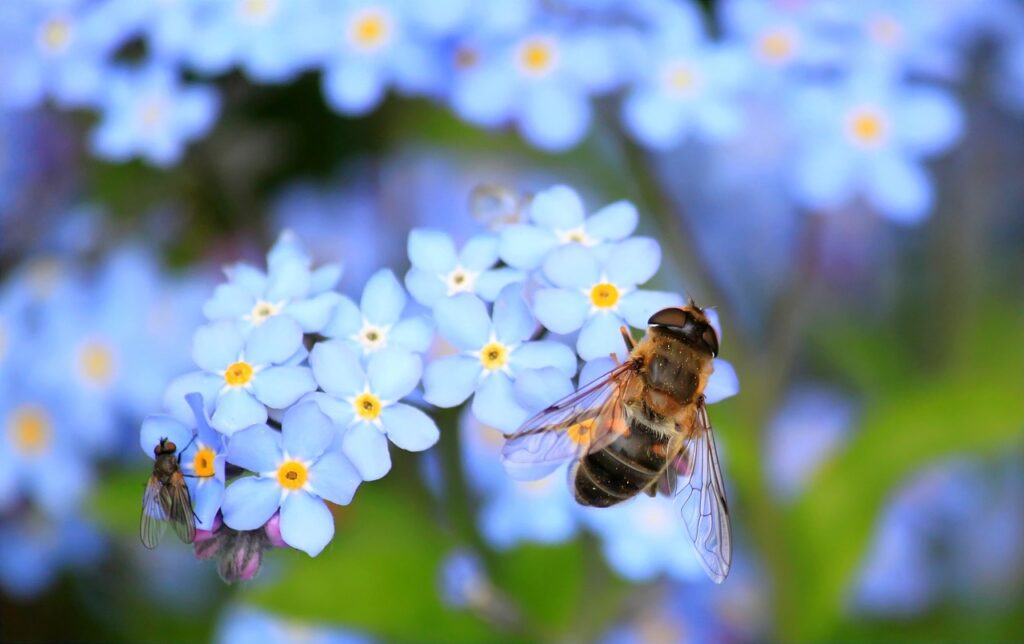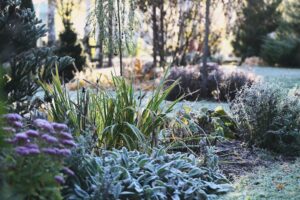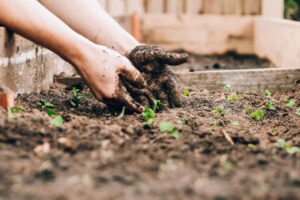Encouraging wildlife into your garden can be beneficial for biodiversity, and help pollinate flowers, fruit or vegetables you might be growing.
Bees are an important pollinator, so we’ve put together a handy guide on how to create a bee-friendly garden to help attract bees to your outdoor space.
Why are bees so important?
There is no sugar coating this one – without bees (and other insect species), it wouldn’t take long for the UK’s ecosystem to collapse. Almost 90% of wild plants and 75% of crops depend on pollination, and it’s estimated that UK farmers would have to spend in the region of £1.8 billion per year to manually pollinate crops in the way that bees do for free. The wild trees and flowers pollinated by bees then support other insects, which go on to support birds, bats, and mammals with food and shelter. They are an essential part of the diversity which we, and all other species, depend on.
How to make your garden bee-friendly
Creating a bee-friendly garden is invaluable in the support of these incredible insects and you can do so without ruining a landscaped space or giving yourself additional work.
When many of us are choosing our planting schemes, we often think about year-round interest and this is also the first step in attracting bees to your garden. Growing a range of plants that will provide a continuous flowering period from at least March to October not only improves your enjoyment of your garden but will benefit insect life.

What plants attract bees?
Although all flowering plants offer something for pollinators, certain plants have flower shapes that are inaccessible for bees. Tightly packed flower heads or those with long, thin tunnels are unusable while other flowers, such as pansies, begonias, or buzzy lizzies, offer little or no pollen and nectar. Bees also see in ultraviolet light through their five eyes and their vision spectrum ranges from orange to ultraviolet. They cannot see red but are drawn to purples and blues which have a shorter colour wavelength.
Here are some plants you can include in make your bee-friendly garden:
Spring – Native Primrose, Crocus, Snowdrops, Bluebells, Dandelion (yes, let those weeds run free!), Daffodil, Flowering Cherry, Rosemary
Summer – Lavender, Sunflower, Eryngium, Verbena, Buddleia, Allium, Aquilegia, Borage, Cornflower, Coneflower
Autumn – Sedum, Rudbeckia, Aster, Caryopteris, Echinacea, Ivy, Anemone
Winter – Hellebore, Willow, Aconite, Winter Flowering Heather, Winter Flowering Clematis, Mahonia
Also consider planting ‘woolly’ plants with soft leaves, the hairs of which can be collected by certain species of bee to create their nests. These could include Lamb’s Ears (Stachys) or Mullein (Verbascum).
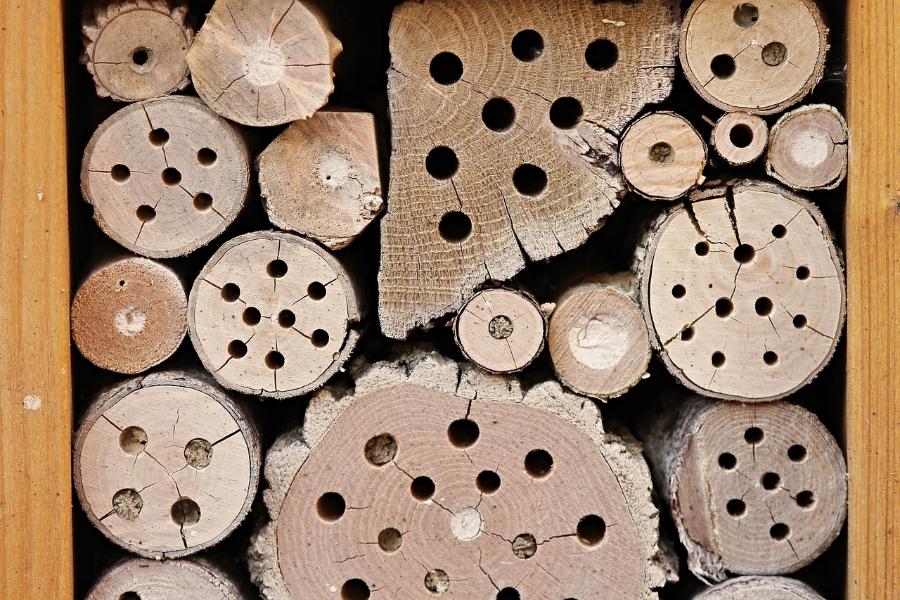
Create a bee habitat
There are more than 250 bee species in the UK, including 24 types of bumblebee. 90% of these UK species are solitary and so don’t live in a traditional hive. These solitary bees tend to build single nest cells for their larvae, choosing anything from old bricks and wood to hollow stems of old plants.
Creating or purchasing a ‘bee hotel’ for your garden is another way that you can help the species and increase the biodiversity of your outside space. Bees love the sun so place your hotel in a south facing position and try to find somewhere that can be sheltered from heavy rain.
To make your own hotel, you can go as simple as placing some hollow reed or bamboo canes into a clean tin or as complicated as building a multi storey palace with drilled wood, old brinks and, again, reed and bamboo canes.
Once created, do maintain your bee hotel by taking it down every October to brush off cobwebs and clean everything thoroughly so that next spring – late March or early April – the bees will be back.
Bees also need a safe water source and this can be created in your garden by simply filling a shallow container or tray with rain water and placing in some stones or rocks to give a platform for the bees to land and drink.
Avoid pesticides
None of us want ‘pests’ taking over our gardens, destroying the plants and produce that we have so carefully grown and nurtured. However, many pesticides contain toxins that can affect a bee’s ability to navigate, reproduce or even cause its death.
Natural insecticides can be made at home from ingredients such as chilli peppers, garlic or even tomato leaves. Alternatively, consider companion planting or simply let nature take its course – there’s balance in all things.
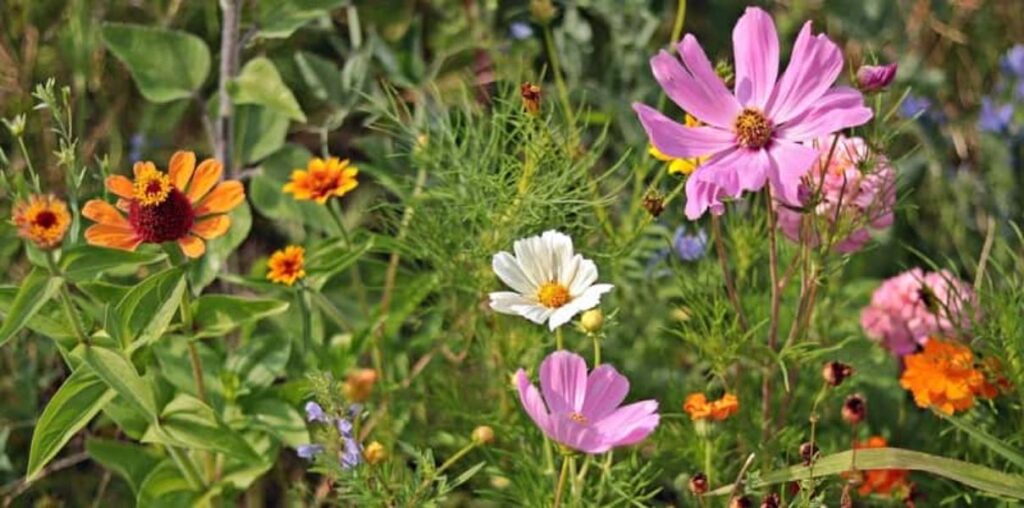
Let your garden go wild!
The most simple way to attract bees to your outside space is to let an area go wild. While you might not have room for a wildflower meadow, a patch or border left to its own devices or sprinkled with a packet of bee-friendly wildflower seeds can create a haven for wildlife in general and look more attractive than you might imagine. It also cuts down on your gardening time with no need to weed or mow! Check out our blog on Growing Wildflowers in your garden.
Once you have created a haven for bees in your garden, sit back, relax, and enjoy the gentle buzz of happy insects on a beautiful summer day.
Conclusion
In conclusion, cultivating a bee-friendly garden is not only beneficial for bees but also for the entire ecosystem. By following the tips outlined in our guide, gardeners can play a crucial role in supporting these essential pollinators and preserving biodiversity. Together, let’s contribute to the sustainability of our planet’s ecosystems by creating welcoming habitats for bees.

